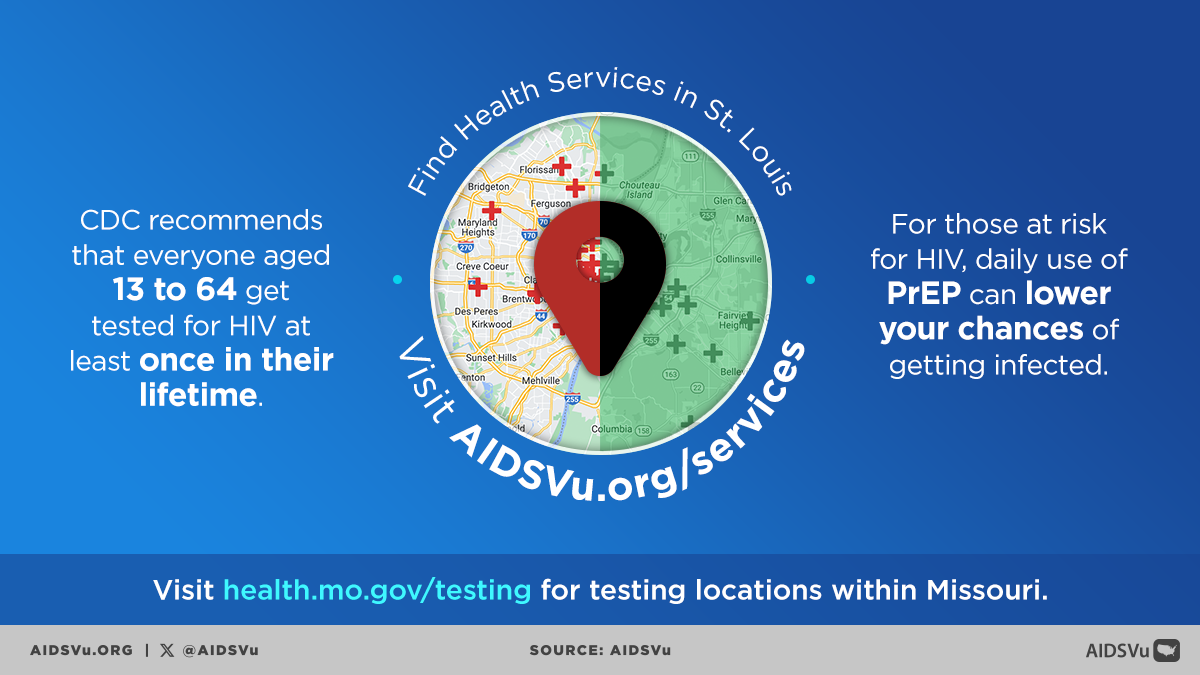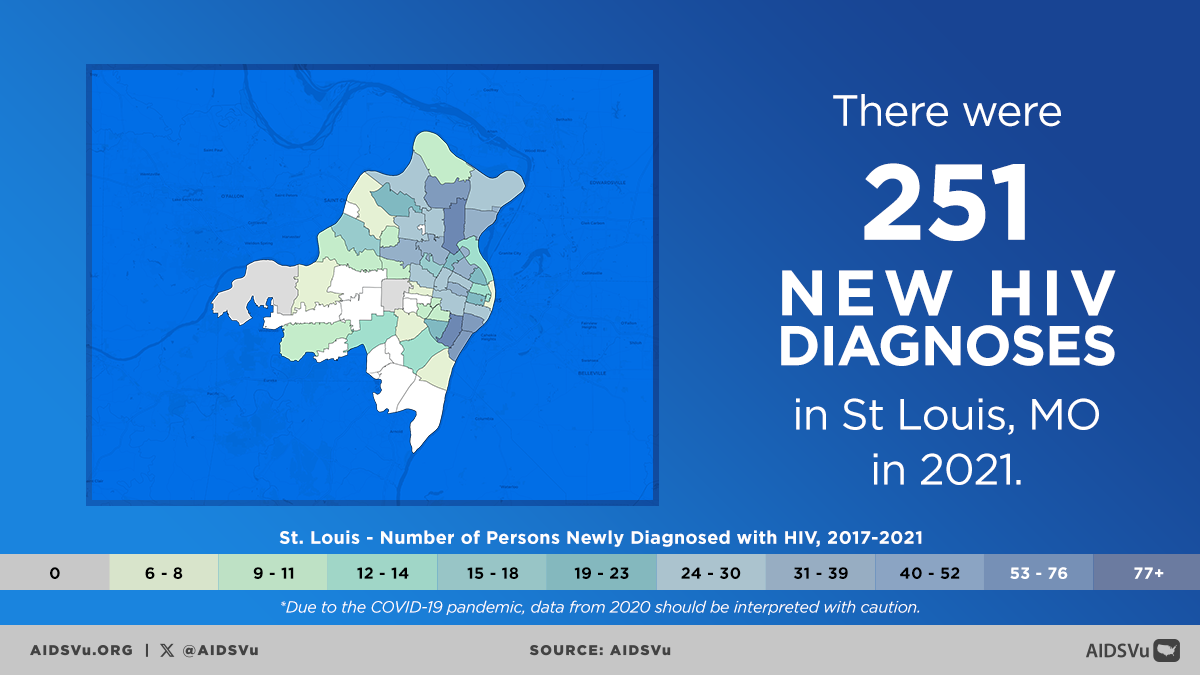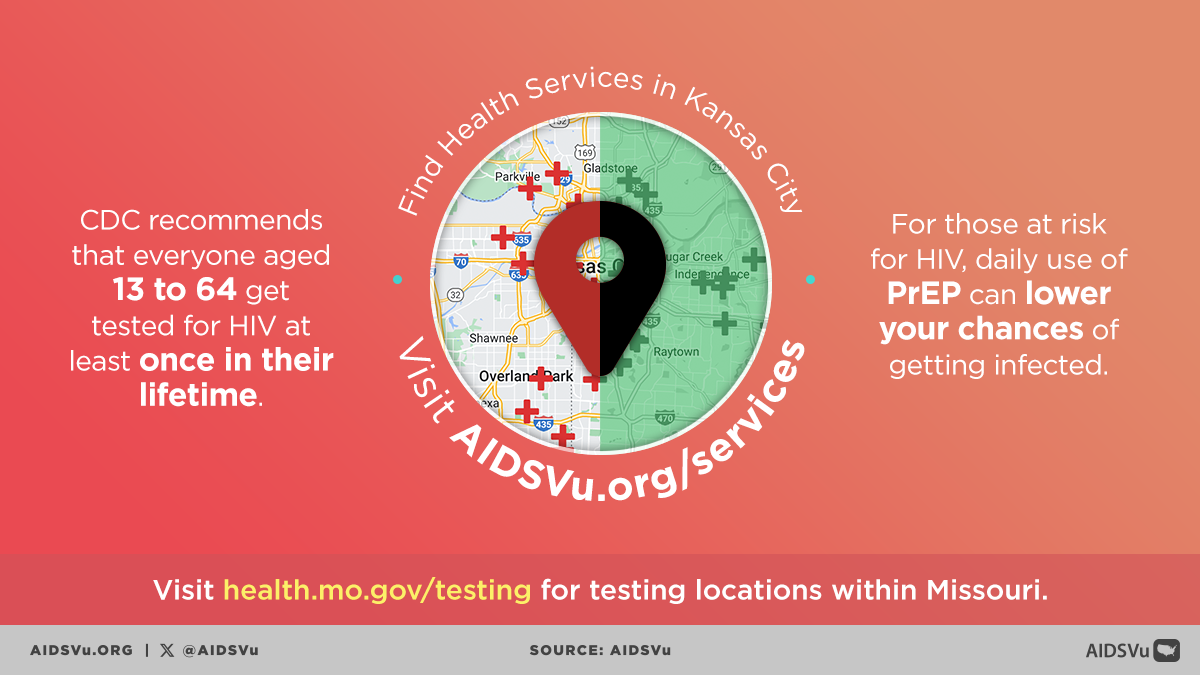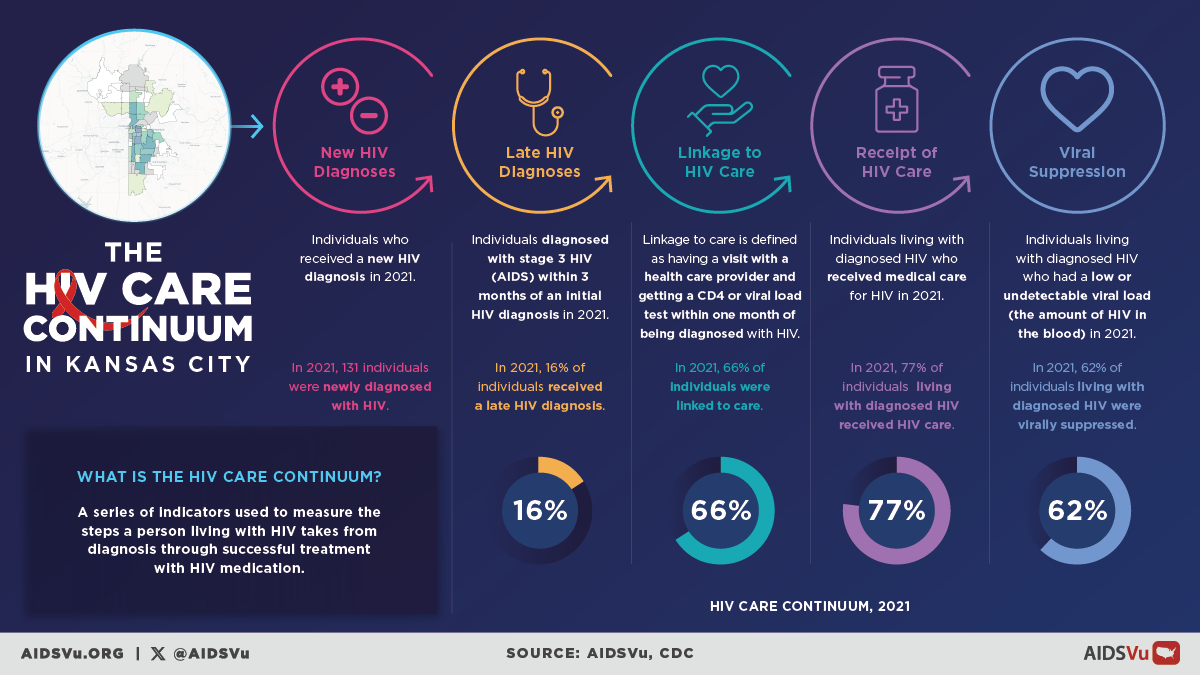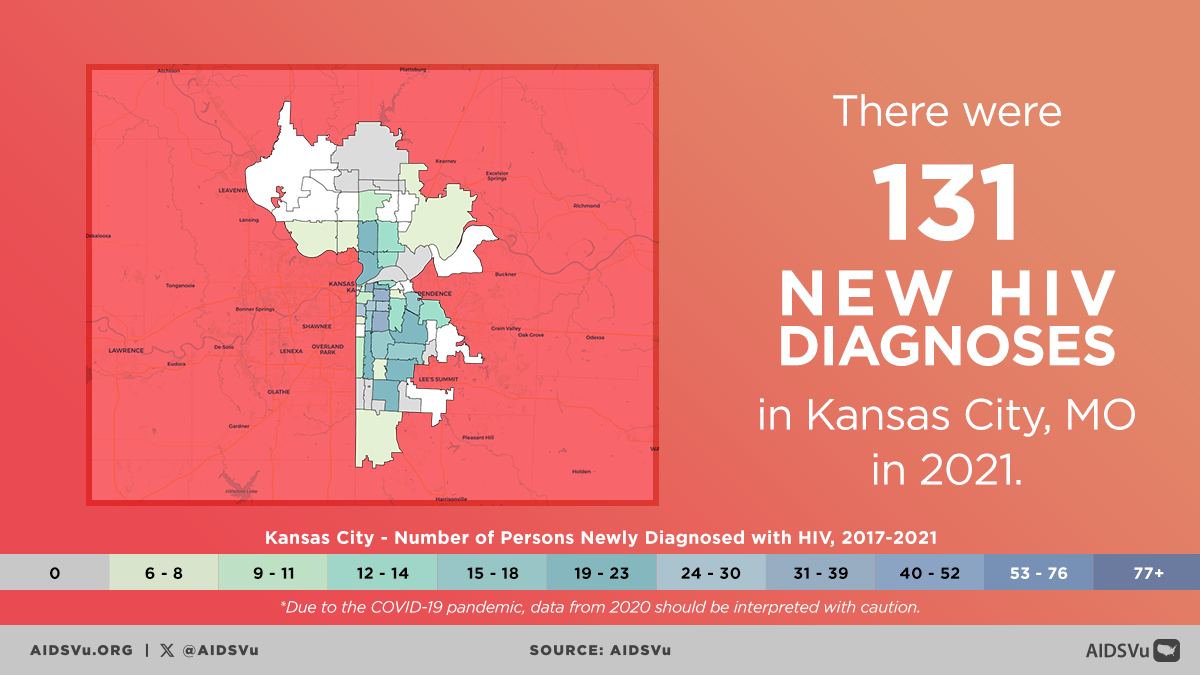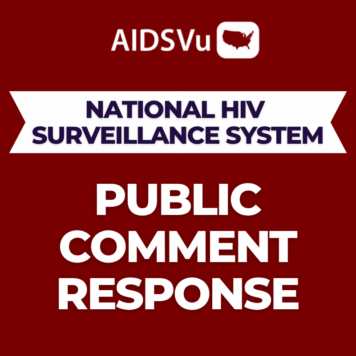AIDSVu releases updated data for more than 50 U.S. cities, which represent more than 50% of all U.S. HIV prevalence and nearly half of all U.S. HIV new diagnoses.
Data highlights that Black Americans continue to be disproportionately impacted by the HIV epidemic.
Washington, DC – Today, AIDSVu—a leading organization that makes HIV data widely available—released 2021 ZIP Code-level HIV data and interactive maps for more than 50 cities across the U.S., illustrating how the HIV epidemic impacts cities and neighborhoods at a fine geographic level. AIDSVu works with state and local health departments across the country to publish the most recent HIV data available, and is the only site to make it publicly available and comparable across the country. A full list of the cities is available below.
Using the latest publicly available data at the ZIP Code-level, these new maps visualize disparities in HIV prevalence, new HIV diagnoses, and steps of the HIV care continuum such as linkage to care, receipt of care, and viral suppression, both geographically and across different demographic groups such as age, sex, and race/ethnicity. AIDSVu’s maps can be viewed alongside social determinants of health and overlaid with HIV testing, PrEP, and care service locations. View the maps here.
This year, AIDSVu has added profiles and maps for Kansas City, MO and St. Louis, MO. Missouri is a jurisdiction prioritized for Phase 1 of Ending the HIV Epidemic: A Plan for America, a ten-year initiative to end the HIV epidemic in the U.S.
“Understanding HIV prevalence at the local level is critical to ending this epidemic. AIDSVu is proud to again release the most comprehensive look at ZIP Code-level HIV data for more than 50 cities across the U.S. With these data, policymakers, public health officials, and community members can identify areas in need of targeted and effective public health programs and make informed decisions on interventions as we work to end the HIV epidemic in our local communities,” said Patrick Sullivan, DVM, PhD, Professor of Epidemiology at Emory University’s Rollins School of Public Health and Principal Scientist for AIDSVu.
“Data is critical to ensure vulnerable communities and populations get the resources they need to fight HIV and AIDS. As we approach World AIDS Day and continue to fight in Congress for PEPFAR reauthorization, this is a welcome sign that we have partners in the field helping state and local health departments understand how this epidemic is impacting their communities, particularly for communities of color who continue to be disproportionately impacted by the epidemic,” said Congresswoman Barbara Lee (D-CA-12), co-chair of the Congressional HIV Caucus.
Major city-level data updates this year include:
- ZIP Code-level maps showing HIV prevalence (2021) and new diagnoses (cumulative 2017 to 2021) for more than 50 U.S. cities.
- ZIP Code-level maps showing HIV care continuum indicators in 2021 such as late HIV diagnoses, linkage to HIV care, receipt of HIV care, and viral HIV suppression for more than 40 U.S. cities.
- Enhanced city-data local profile pages, including new diagnoses from 2017-2021 for more than 50 U.S. cities, many with HIV care continuum data, are available on our Local Data page here and can be exported as city-specific factsheets.
- ZIP Code-level HIV maps alongside maps of social determinants of health – such as poverty, unstable housing, high school education, median household income, and income inequality are available here.
- Service locators available on interactive maps, including HIV prevention, testing, Ryan White care services, housing opportunities for people living with AIDS, NIH-funded HIV prevention, vaccine, and treatment trial locations are available here.
New Cities on AIDSVu:
AIDSVu now features profiles and maps for Kansas City, MO and St. Louis, MO. Missouri is a jurisdiction prioritized for Phase 1 of Ending the HIV Epidemic: A Plan for America, a ten-year initiative to end the HIV epidemic in the U.S.
Black Americans in these two cities and across the country continue to be disproportionately impacted by HIV:
- Black Americans represented 48% of all new HIV diagnoses in Kansas City, MO in 2021, compared to 32% for White Americans and 14% for Hispanic/Latinx individuals.
- In St. Louis, MO, Black Americans accounted for 62% of new HIV diagnoses in 2021, compared to 26% for White Americans and 8% for Hispanic/Latinx individuals.
Full list of the cities available on AIDSVu:
Seattle, Washington; San Francisco, California; Orange County, California; Los Angeles, California; Oakland & Alameda, California; San Diego, California; Las Vegas, Nevada; Phoenix, Arizona; Denver Metro Area, Colorado; Minneapolis/St. Paul Metro Region, Minnesota; Milwaukee, Wisconsin; Chicago, Illinois; St. Louis, Missouri; Kansas City, Missouri; Fort Worth, Texas; Dallas, Texas; Austin, Texas; San Antonio, Texas; Houston, Texas; Baton Rouge, Louisiana; New Orleans, Louisiana; Jackson, Mississippi; Memphis, Tennessee; Nashville, Tennessee; Birmingham, Alabama; Montgomery, Alabama; Mobile, Alabama; Jacksonville, Florida; Orlando, Florida; Tampa, Florida; West Palm Beach, Florida; Fort Lauderdale, Florida; Miami, Florida; Atlanta, Georgia; Columbia, South Carolina; Charleston, South Carolina; Charlotte, North Carolina; Raleigh, North Carolina; Hampton Roads, Virginia; Richmond, Virginia; Cincinnati, Ohio; Columbus, Ohio; Cleveland, Ohio; Detroit, Michigan; Baltimore, Maryland; Philadelphia, Pennsylvania; Newark, New Jersey; Providence, Rhode Island; Hartford, Connecticut; New Haven, Connecticut; Bridgeport, Connecticut; Jersey City, New Jersey; New York, New York; Washington, DC; San Juan – Caguas – Guaynabo, Puerto Rico.
About AIDSVu’s Annual City Data Update
AIDSVu is presented by Emory University’s Rollins School of Public Health in partnership with Gilead Sciences, Inc. and the Center for AIDS Research at Emory University (CFAR). AIDSVu continues to advance its mission to make HIV data widely available, easily accessible, and locally relevant to inform public health decision-making. The site aims to provide researchers, policymakers, and community members with a more comprehensive understanding of the HIV epidemic at the local-, state-, and national-level.
ZIP Code, census tract, and community data were provided by state and city health departments and compiled by researchers at the Rollins School of Public Health. Learn more about AIDSVu’s HIV care continuum data and sources, see our FAQ and Data Methods.


